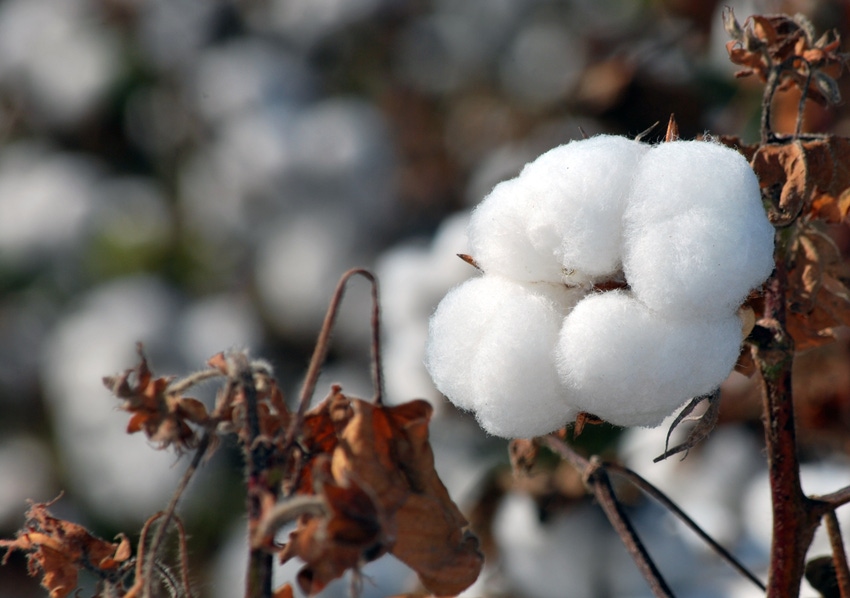
In addition to providing transgenic traits that enable cotton growers to control several insect and weed pests, many newer cotton varieties unleash the genetic horsepower for higher yield potential.
Should we bump fertility in order for the newer varieties to achieve their yield potential?
Newer varieties have a higher genetic yield potential, but that yield increase occurs during a shorter period of time and happens faster than older varieties, according to Georgia cotton specialist Jared Whitaker. “Newer cotton varieties put on fruit quicker and earlier in the plant’s life than ever before,” he says. “We have to make sure we have the appropriate amount of fertilizer available to the plant during that critical time.”
Whitaker notes that Georgia soils are relatively leachable in regard to potash and nitrogen. “For example, we have potential issues with potash due to the fact we have such a high demand for the nutrient during peak bloom. The nutrient might be available, but the plant sometimes can’t take up enough.
“We continue to follow university/Extension fertility recommendations, based on soil test results, and maybe consider additional potash applications where we have issues such as leachable soils. We recommend applying all potash that the soil test calls for upfront.
“Our growers pay more attention than ever to following soil test recommendations for potash, and making sure they have enough in the soil so it’s not a limiting factor when plant demand is high. However, in certain cases where some potash has leached and potash is deficient, foliar applications can remedy the issue.”
Georgia university/Extension nitrogen rate recommendations vary according to yield goal: For 750 lbs. per acre, the nitrogen rate recommendation is 60 lbs. per acre; 1,000, 75 lbs.; 1,250, 90 lbs.; and 1,500, 105 lbs.
Georgia cotton growers are planting more cover crops, and their impact on cotton fertility depends on several factors, including rainfall at the time of planting the cover crops. Growers realize several benefits to planting a heavy residue rye cover crop. “If we use a heavy residue rye cover crop, we can add 30 units of nitrogen per acre,” Whitaker says
Tennessee cotton growers don’t see a yield response to increased rates of nitrogen or potassium with the newer cotton varieties, says the state’s cotton specialist, Tyson Raper.
“Our current university/Extension fertility recommendations remain adequate and sound,” he says. “Yield increases in years of record yields have validated our university/Extension recommendations.”
However, several Mid-South agronomists are working to fine-tune regional sulfur recommendations. “We see some variability in sulfur recommendations from state to state, but generally speaking, an 8 lb. to 20 lb. per acre sulfur application can increase yields in fields that are sulfur-deficient,” Raper says.
Cover crops species selection determines how growers need to adjust their fertility practices in the season. “Cereal rye is a very effective and widely used cover crop, but it can tie up some soil nitrogen early in the season,” he says.
“The good news is that cotton needs very little nitrogen early; the plant requires it later from squaring through flowering. However, growers might need to apply a little nitrogen early to overcome the immobilization.
“We typically see cover crops extracting nutrients possibly lower in the soil profile, or they can prevent nutrients from leaching. It might take up nitrogen in the nitrate form, and then deposit it on the soil surface as those residues break down. Cover crops are extremely beneficial in reducing the potential for a fertility loss through the system. They can help growers be more efficient with their applied fertilizer.”
Increasing West Texas cotton yields have focused attention on matching appropriate fertility levels to the genetic yield potential of newer cotton varieties.
“Our university/Extension nutrient recommendations for cotton have traditionally topped at three bales,” says Texas Cotton Specialist Seth Byrd. “Now we’re discussing upping those recommendations for four-bale production.
“Many Texas growers hit four bales per acre in 2016. We had really good fall conditions, which helped. We might have to increase our fertility recommendations for the higher yielding varieties.”
Byrd encourages cotton growers to continue soil testing, and apply fertilizer based on the results of the soil test, as well as their yield goal — whether it’s two bales or four bales.
“We need to apply nutrients that can be actually utilized, so not only do we hit a good yield goal, we hit a good return on our investment. It’s back to basics — you soil test and base your fertilizer application on the results: your yield goals and your bottom line.”
Many West Texas cotton growers plant cover crops, but not to the extent that growers do in the Southeast and Mid-South.
“We don’t have the cover crop biomass that’s produced in those other two regions because of our winters and our limited water supply,” Byrd says. “When we use a cover crop, we typically have to bump up the nitrogen application a bit to account for what may be tied up in that cover crop. Some of our growers plant rye as a cover crop; others, a mix of small grain. Some will plant wheat that will be grazed.”
About the Author(s)
You May Also Like




